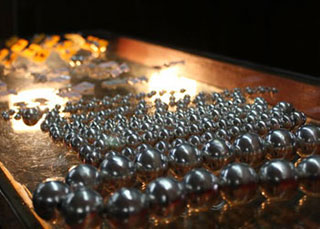Methods used by gem cutters have hardly changed in hundreds of years. but in Myanmar. the development of the gem industry means there are now more companies exporting expertly cut gems out of the country. The lapidary (someone who is skilled in cutting and polishing jewel and valuable stones) has become all – important be – cause the quality – and value – of a gem is determined by the cut. People used to cut gems by hand. but now people use a gem cutting machine. Many gem cutters keep their cutting methods secret from other lapidaries.


There are two steps in gem cutting
First a rough cut is made before the second. which is the final cut. People used to use sapphire powder to polish the gems but now people use diamond powder. which gives the diamonds more beautiful color. and hopefully a high price.
Mr James Firmin. a leading gem trader from London. agrees that gem cutting has become a more refilled art. The cutters would use a lap (circular polishing wheel) coated with diamond or sapphire powder. if available. which would usually be turned through the use of foot pedal. A primitive example can still be seen in use in Sri Lanka today. in the form of a stick attached to the wheel axis by a rope.
On a modern machine. the stone is held by a ‘dop’ (the part of the machine that holds the gem). which is turned for accurate symmetry. The angle of cutting is important to ensure the gem sparkles; each mineral has its own specific angle. For example. a diamond must be kept shallower then an amethyst. Some stones – especially rubies and sapphires – must be cut in the correct direction of the crystal since the color changes With the direction.
There are two styles of cutting: A ‘cabochon’ cut is the oldest form of cutting in which the stone is smoothly rounded; while the faceted cut. which produces symmetrical plain surfaces on the gem. is a popular method for cutting diamonds. The most common cut is the brilliant. In addition to the round brilliant. stones are cut in a variety of square. triangular. diamond-shaped. and trapezoidal faceted cuts. The use of such cuts is largely determined by the original shape of the stone.
